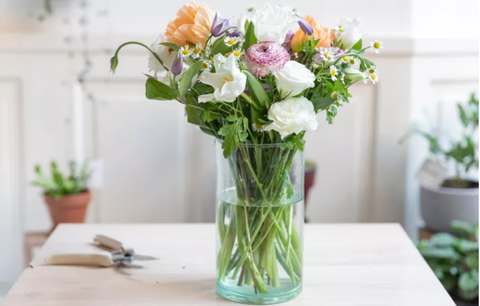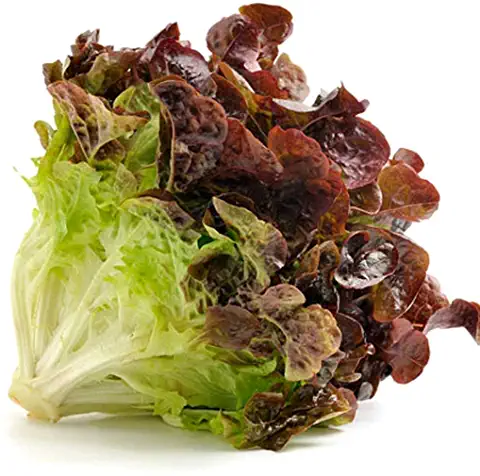Houseplants can bring life and vibrancy to any indoor space, but sometimes even the most diligent plant parents find themselves faced with a struggling plant. Whether it's wilting leaves, yellowing foliage, or drooping stems, a dying houseplant can be distressing. However, fear not! With the right knowledge and care, it's possible to revive your beloved green companions and bring them back to their former glory. In this article, we'll explore ten essential tips for rehabilitating dying houseplants and giving them a new lease on life.The following content also has some reference value for raised garden beds.
Assessing the Situation
Signs of distress
When it comes to reviving a dying houseplant, the first step is to carefully assess the situation. Look for signs of distress such as wilting leaves, yellowing foliage, or stunted growth. These symptoms can provide valuable clues about the underlying issues affecting your plant's health.
Identifying the cause
Once you've identified the signs of distress, it's important to investigate the root cause of the problem. Common issues may include overwatering, underwatering, poor soil quality, inadequate light, or pest infestations. By pinpointing the cause, you can develop a targeted plan to address the specific needs of your struggling plant.
Repotting
Choosing the right pot
Repotting can provide a fresh start for a struggling houseplant, but it's essential to choose the right pot. Select a container that is slightly larger than the plant's current pot, with adequate drainage holes to prevent waterlogging. A pot that is too large can lead to waterlogged soil and root rot, so choose wisely.
Refreshing the soil
When repotting a dying houseplant, it's also important to refresh the soil. Remove the plant from its current pot and gently shake off excess soil from the roots. Replace any compacted or depleted soil with fresh, nutrient-rich potting mix to provide your plant with the resources it needs to thrive.

Trimming and Pruning
Removing dead or yellowing leaves
Trimming away dead or yellowing leaves is essential for promoting new growth and preventing the spread of disease. Use clean, sharp scissors or pruning shears to carefully remove damaged foliage, taking care not to injure the plant's healthy parts.
Pruning overgrown branches
In addition to removing dead leaves, pruning overgrown branches can help rejuvenate a struggling houseplant. Identify any long or leggy stems and trim them back to encourage bushier growth and improve the plant's overall appearance.
Adjusting Watering Routine
Finding the balance
Achieving the right balance of water is crucial for the health of a dying houseplant. Pay attention to the plant's specific watering needs, taking into account factors such as its species, size, and environmental conditions.
Using the right watering technique
When watering a struggling plant, avoid overwatering, which can lead to root rot and other issues. Instead, water the plant thoroughly but allow the soil to dry out slightly between waterings. Use a watering can with a narrow spout to deliver water directly to the base of the plant, avoiding wetting the foliage unnecessarily.
Providing Adequate Light
Understanding light requirements
Different houseplants have varying light requirements, ranging from low to bright indirect light. Assess the lighting conditions in your home and adjust the placement of your struggling plant accordingly to ensure it receives the appropriate amount of light.
Adjusting placement accordingly
If a plant is not receiving enough light, consider moving it to a brighter location near a window or under a grow light. Conversely, if a plant is experiencing light stress or sunburn, move it to a shadier spot to prevent further damage.
Fertilizing
Choosing the appropriate fertilizer
Selecting the right fertilizer is essential for providing your struggling houseplant with the nutrients it needs to thrive. Choose a balanced, water-soluble fertilizer specifically formulated for indoor plants, and follow the manufacturer's instructions for application.

Applying fertilizer properly
When fertilizing a dying houseplant, apply the fertilizer sparingly to avoid overfeeding, which can cause nutrient imbalances and damage the plant's roots. Dilute the fertilizer according to the recommended dosage and apply it to moist soil to prevent burning the plant's roots.
Humidity Control
Increasing humidity levels
Many houseplants thrive in humid environments, so increasing humidity levels can help revive a struggling plant. Place a tray filled with water and pebbles near the plant to create a humid microclimate, or use a room humidifier to maintain optimal humidity levels.
Using pebble trays or humidifiers
Alternatively, you can place the plant on a pebble tray filled with water to increase humidity around the plant's foliage. For larger plants or those with specific humidity requirements, consider investing in a room humidifier to provide consistent moisture levels.
Pest Control
Identifying common pests
Pest infestations can quickly take a toll on a struggling houseplant, so it's essential to identify and address any signs of pest activity promptly. Common indoor plant pests include aphids, spider mites, mealybugs, and scale insects.
Using natural remedies or pesticides
To control pests without harming your plant or the environment, consider using natural remedies such as neem oil, insecticidal soap, or homemade botanical sprays. If the infestation is severe, you may need to resort to chemical pesticides, but use them sparingly and follow the manufacturer's instructions carefully to minimize harm to the plant and surrounding environment.
Temperature Regulation
Avoiding extreme temperatures
Houseplants are sensitive to temperature fluctuations, so it's essential to keep them away from drafts, heaters, air conditioners, or other sources of extreme heat or cold. Maintain a consistent temperature range to prevent stress and promote healthy growth.
Providing proper ventilation
Good air circulation is essential for the health of a struggling houseplant, so ensure adequate ventilation in the room where the plant is located. Open windows or doors periodically to allow fresh air to circulate, or use a small fan to improve air movement around the plant.
Patience and Observation
Allowing time for recovery
Reviving a dying houseplant takes time and patience, so be patient and give the plant time to recover. Avoid making drastic changes or interventions and allow the plant's natural resilience to work its magic.
Monitoring progress
Throughout the rehabilitation process, closely monitor the plant's progress and make adjustments as needed. Keep track of any changes in its appearance, growth, or behavior, and be prepared to adapt your care routine accordingly.

Conclusion
In conclusion, reviving a dying houseplant requires a combination of patience, observation, and targeted care. By following these ten essential tips, you can assess the situation, address the underlying issues, and provide your struggling plant with the support it needs to thrive once again. With a little TLC and dedication, you can breathe new life into your indoor greenery and enjoy the beauty of healthy, vibrant houseplants for years to come.









